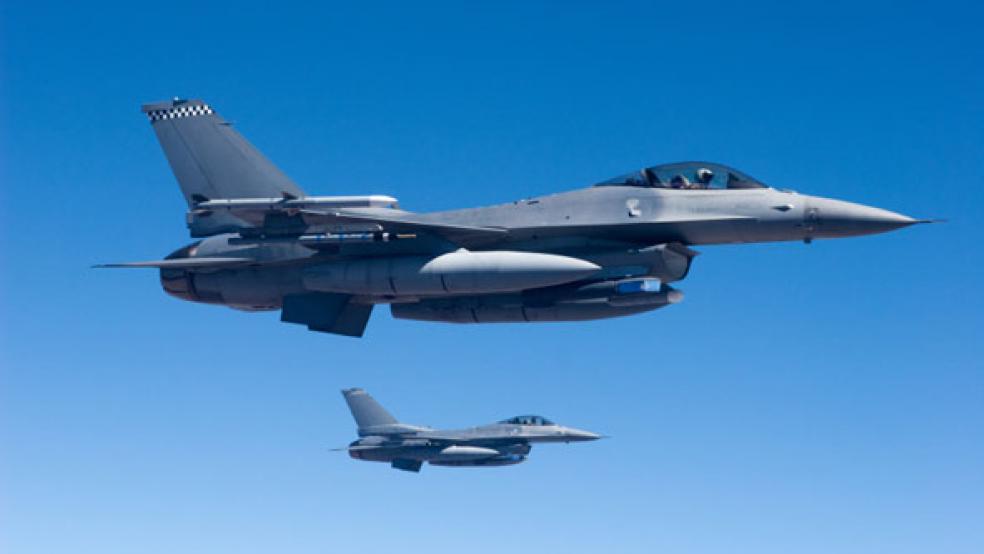Wall Street and the rest of the country woke up yesterday to the surprising news that the U.S. Gross Domestic Product had contracted in the fourth quarter of 2012, falling by 0.1 percent. The news was especially disappointing in light of analysts’ expectations of 1.1 percent growth. It was also the first time GDP growth was negative since 2009.

The drop was attributed to a 22 percent drop in defense spending in the fourth quarter, shaving 1.28 percentage points from GDP. What’s alarming about this decrease is that it happened before the more than $50 billion in sequestration cuts, set to take effect in March.
“In less than 30 days, unless Congress and the White House act, sequestration will kick in, leading to higher unemployment, reduced tax revenue and lower consumer spending,” Marion Blakey, CEO of the Aerospace Industries Association, a defense industry lobbying group, warned in a statement released Wednesday in response to the GDP report. “This will be the second wave that overwhelms our floundering economic boat, likely sinking us back into a recession.”
Given the tone of such warnings, the rough fourth quarter the defense industry experienced and the coming sequester, one might think that defense stocks would struggle along with the industry. But that isn’t quite the case. As the markets have reached new highs, they’ve pulled defense industry stocks along, lifting many to within striking distance of their peak prices for the past year. In fact, many defense contractors are saying that they aren’t concerned with the impact of sequestration Defense stocks have failed to match the broader market’s recent gains, though.
The stocks of most major defense contractors did take a tumble after the November election, as investors worried that a continuation of the Obama presidency guaranteed that defense spending would be cut, whether or not sequestration took place. Since the market hit its post-election low on November 15, though, shares of defense contractors like Boeing, General Dynamics, Lockheed Martin and Northrup Grumman have all posted gains, but none have kept pace with the 10 percent increases in the Standard & Poor’s 500-stock index or the Dow Jones industrial average.
The next month could be more challenging as the threat of sequestration draws near.
“There’s still so much uncertainty over what’s going to happen with the sequester,” said Deana Arnett, a financial planner at the Rosenthal Wealth Management Group in Virginia,. “It’s difficult to ascertain which companies would be most harmed by cuts in defense.”
As they reported quarterly earnings in recent days, though, executives have expressed concerns about the potential effects of the automatic spending cuts.
“We remain deeply concerned that sequestration could occur as the default outcome, if negotiations failed to produce an agreement,” Lockheed Martin CEO Marillyn Hewson told analysts on a conference call last week. At the same time, CEOs such as Wes Bush of Northrop Grumman have chosen not to speculate publicly about just what type of hit their companies would face if the sequestration went through – and company after company issued projections for 2013 that did not include the spending cuts.
Arnett said that the companies may be able to withstand the spending cuts without significant losses. ““I do believe there are strategic alliances that the companies can engage in that will offset losses from DOD spending cuts,” she said. For instance, Lockheed, anticipating a shift from fighter jets to drones, recently acquired Chandler/May, Inc., a company that makes unmanned aircraft. Raytheon recently bought the government solutions arm of SafeNet, Inc., in an effort to make the company for competitive for cyber security and data protection contracts.
Arnett added that many investment managers have little faith that the sequester will happen as expected. She said she expects political infighting to delay and change how the cuts would be implemented. Until there’s certainty on what Washington will do, she said that defense stocks would remain in limbo.
“We are neutral on defense stocks because we simply don’t know what Congress is going to do,” she said. “There no guidance on how this all plays out. It’s like the fiscal cliff all over again but this time it’s the debt ceiling and sequestration.”





